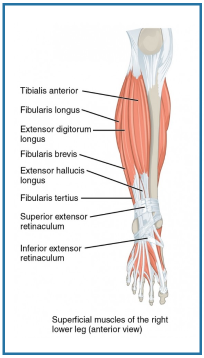Show your lower leg some love
When we think about moving, lifting or power, it is easy to think about the big muscle groups, the quads, hamstrings, biceps, triceps, and the core. The lower leg muscles are as important as all these big lifters in more ways than just to assist moving our bodies.
Multifunctional muscles
The group of lower leg muscles not only propel us but also provide the useful function of pumping blood back up the body, think of them as a lower-body heart that works when contracted. The most prominent muscle is the gastrocnemius, commonly referred to as the gastroc, is ably assisted by the soleus muscle and they both cross both the knee and ankle joint. The former to enable us to bend the leg at the knee and the latter to pull the foot down, plantarflexion or pointy toes.
 The muscle heads, the meaty parts, becomes a tendon about halfway down and merge neatly into the Achilles tendon. Ah-ha, the Achilles, a moment that highlights the importance of this section of the lower leg. I am sure that we all know of, or have heard stories of Achilles tendon tears or strains; almost certainly caused by having tight calves and exerting too much pressure when running, jumping or landing. Worse you can tear the calf muscle severely.
The muscle heads, the meaty parts, becomes a tendon about halfway down and merge neatly into the Achilles tendon. Ah-ha, the Achilles, a moment that highlights the importance of this section of the lower leg. I am sure that we all know of, or have heard stories of Achilles tendon tears or strains; almost certainly caused by having tight calves and exerting too much pressure when running, jumping or landing. Worse you can tear the calf muscle severely.
Many of the accompanying muscles have peroneus, flexor, extensor and digitorum in their names. These are no less important and attach at different points in the tibia and to our feet digits (ok, toes!). That is not to belittle them or give them less significance, but it is all getting a little anatomical.
Briefly, the peroneus group manage ankle movement and, primarily, the peroneus longus provides stability and ability to balance when we shift the load onto the planted foot. If you were to try balancing now for a few minutes, you might notice the ‘burn’ on the outside of the leg, the peroneus longus hard at work making minor adjustments to keep you upright, supported, of course, by the whole stability system which kicks in to assist with balance.
Last, but not least is tibialis anterior, the fleshy bit of the shin. The tibialis allows us to pull the foot towards us, or dorsiflexion.
How tight?
Remarkably, I would expect. Most clients I have trained have had tight calves, and most everyone will never have gently placed their calves or shins on a foam roller. The faces it creates are quite something.
It is entirely feasible that these muscles have never been shown any love. It would be tough love and incredibly beneficial.
Footwear can exacerbate tightness, high heels for example, and if not used to walking around barefoot, moving from a raised heel to completely flat shoes as the muscle is required to be in a different extended position.
Tight calves can also cause the common complaints of plantar fasciitis and Achilles tendonitis. Tight tibialis muscles can cause pain in the shins, big toe, and the front of the ankle so they are essential muscles which when uncared for could create problems elsewhere.
If you are unable to bend over and touch your toes and have laid the blame at your hamstrings, it may be that the calves are contributing to the problem as well.
The impact
If you are a runner or want to run, or you walk a lot, or you squat and want to squat heavier weights, or go up, and down the stairs, your movement may be limited by tightness in the muscles of the lower leg. Especially the big movers, designed to drive us forward, maintain balance and stability and absorb impact. When you are moving fast, as with running, that impact is significant. That dysfunction needs to be managed elsewhere in the movement chain with stresses in other areas.
Assessment and maintenance
A typical assessment for seeing if the calf is causing problems is to check the range of movement (ROM) at the ankle. Dorsiflexion would be tested against a wall and measuring the angle achieved before the heel lifts. If the angle is less than 40 degrees, I will check it passively along with other ankle mobility assessments to see if it were a joint or muscular limitation.
Unless you have ever broken an ankle or suffered a significant strain, the calves are likely impeding the movement.
As such, it is essential not to neglect the lower leg. Rolling, stretching and trigger point work will help with the muscle quality, plyometric training with explosive movement will help with muscle strength; both will increase resilience against injury.
Time to start showing your lower leg some love.
Take care,
Andrew